Perhaps the most famous department store in the world, Harrods is located in the upmarket London neighbourhood of Knightsbridge.
And this post is a shopper's guide to Harrods of London, including popular items, souvenirs, afternoon tea, and more.
- What Can You Buy at Harrods?
- Afternoon Tea
- Eating and the Food Hall
- Best Souvenirs
- Christmas at Harrods
- Dress Code
What Can You Buy at Harrods?
Simply put, Anything! With over 330 departments located inside, there isn't much that Harrods doesn't have on offer.
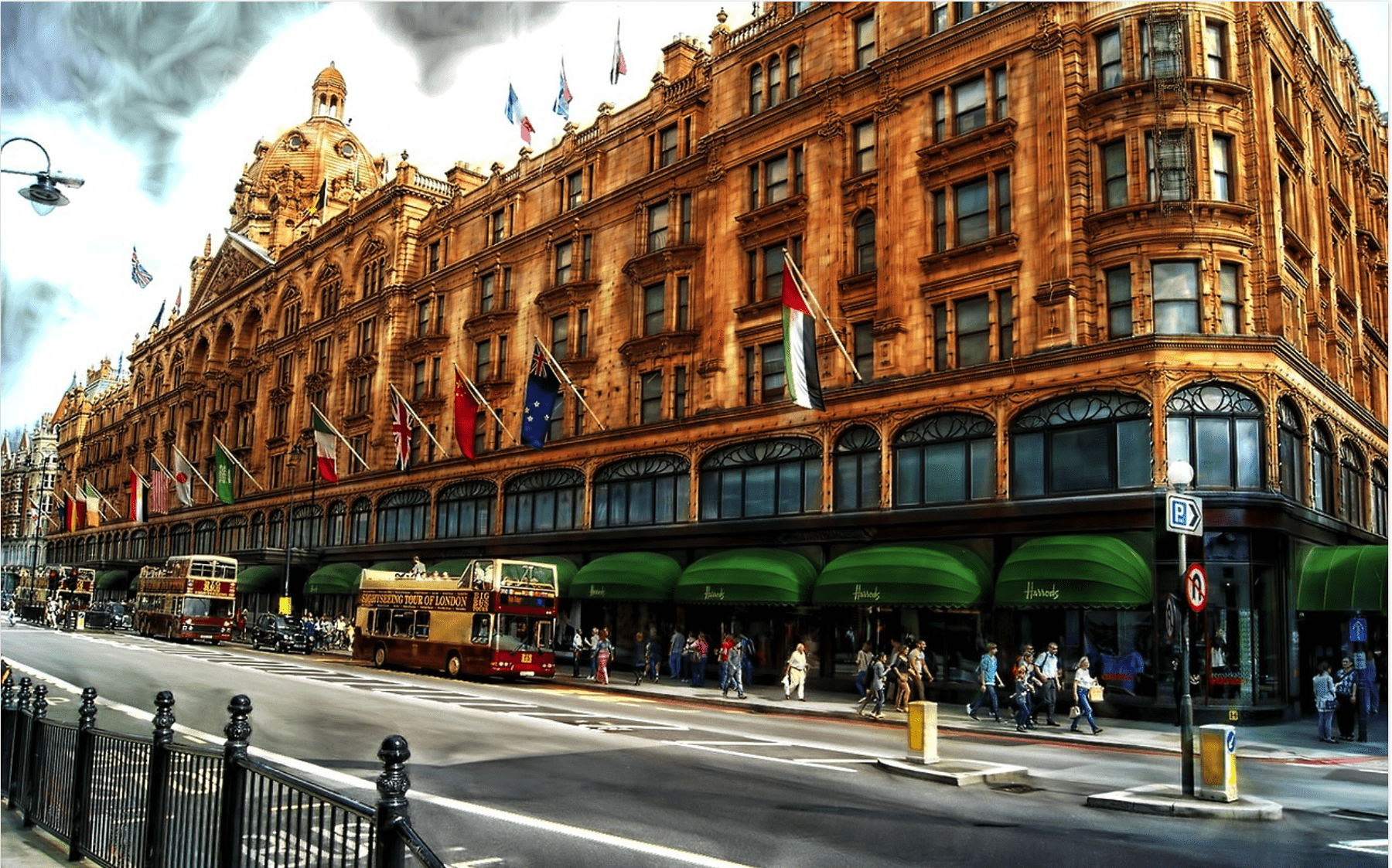
You'll find luxury clothing labels, makeup and perfumes, healthy and beauty items, packaged gifts, high-quality stationery, housewares and home appliances, sporting gear, top-of-the-line electronics, jewellery, sports gear, pet accessories...and more.
There's also a bridal boutique and a special souvenir shop (detailed below).
For a fully luxurious experience, you can book personal shoppers, visit the beauty salon and spa, or have your clothes custom tailored!
For a glimpse at what's on offer, check out the Harrods website.
Afternoon Tea at Harrods
For a truly luxurious and traditional Afternoon Tea, you can't go wrong with the Harrods tea rooms.
The beautiful tea rooms are surpassed only by the delicious flavours on offer.
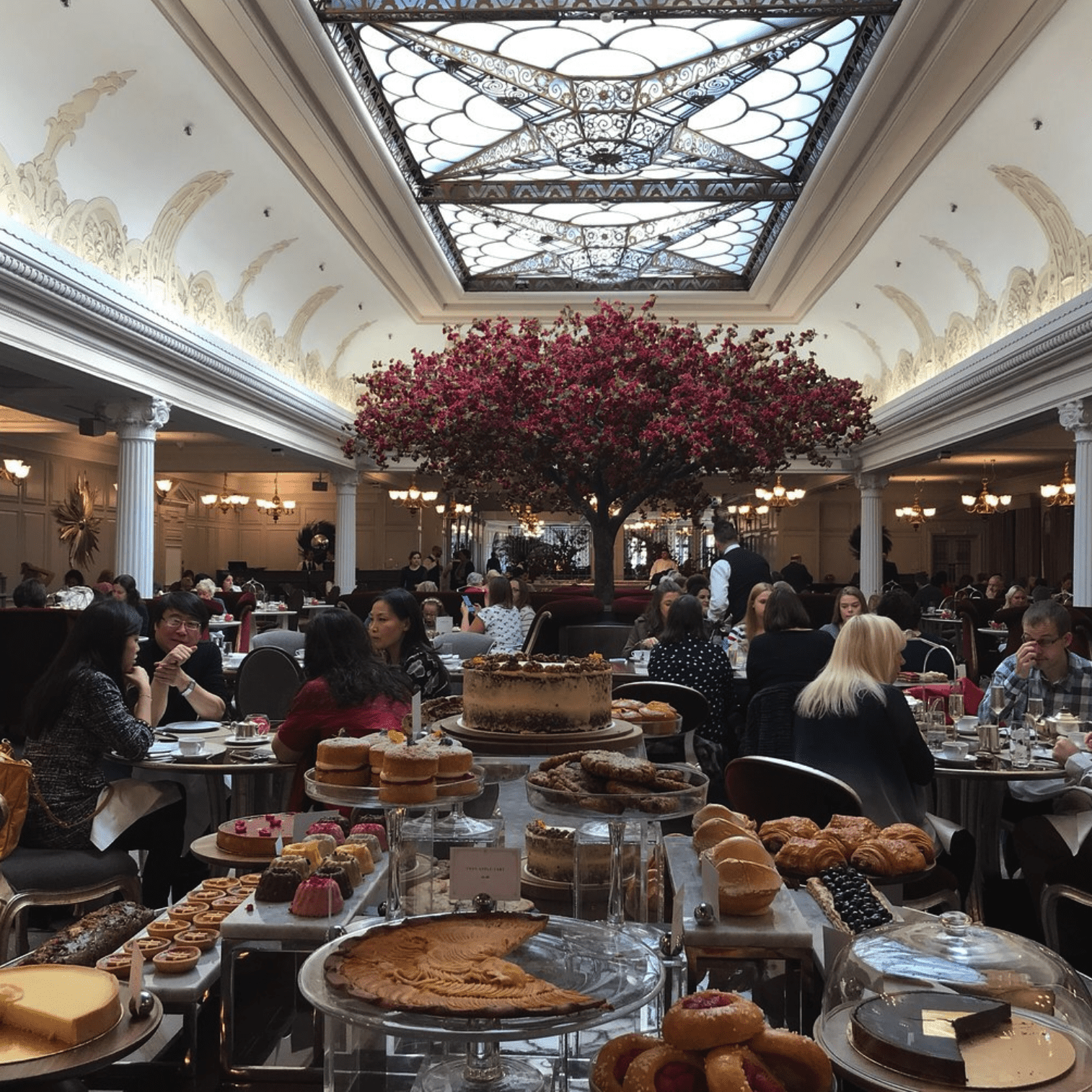
The Harrods Afternoon Tea is the full experience: freshly baked warm scones, clotted cream and jam, savoury sandwiches, and decadent pastries.
The menu changes with the seasons so you're always getting the highest quality ingredients, and there are vegan and vegetarian options, too.
All the food is made by in-house chefs and is served with teas specially blended for Harrods. Oh, and you can also add a glass of their unique house champagne!
Too rich for your blood, then check out our blog post all about affordable afternoon tea options in London.
Eating at Harrods and the Food Hall
Harrods is a one-stop shop for all things luxury, including food and wine.
Billed as "the world's greatest food emporium" the Harrods Food Halls feature everything from fresh seafood, an on-site bakery, a patisserie, a wine and spirits shop, and even an entire hell dedicated to chocolate!
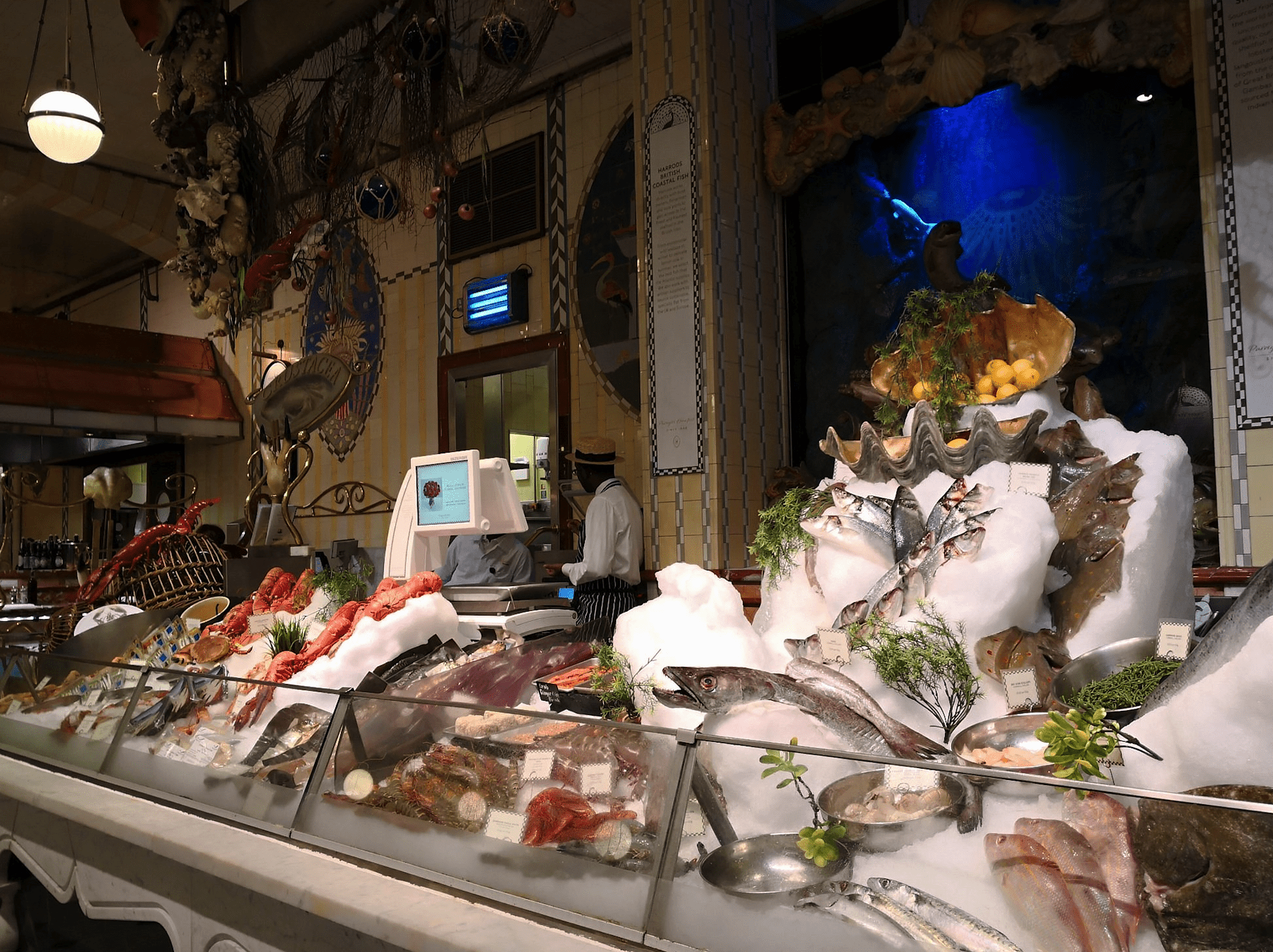
Here you will find ready-to-eat goods as well as ingredients to take and use at home.
You'll also find branded items like teas, coffees, cakes, and biscuits which make perfect - and delicious - souvenirs.
If you're looking to grab a bite while you shop, you're in luck because Harrods has 23 restaurants.
Some of the options you'll find are a grill for meat lovers, an Italian option literally called Pasta Evangelists, a caviar house, a sushi bar, an Indian restaurant run by a Michelin-starred chef, and an upmarket, but traditional, chippie.
The Best Souvenirs from Harrods
If you're looking for something to take home after your visit to Harrods, there are a number of options for you to choose from.
From branded clothing, bags, and wallets to candles, luxury tins of tea, and cookies, there really is something for everyone.
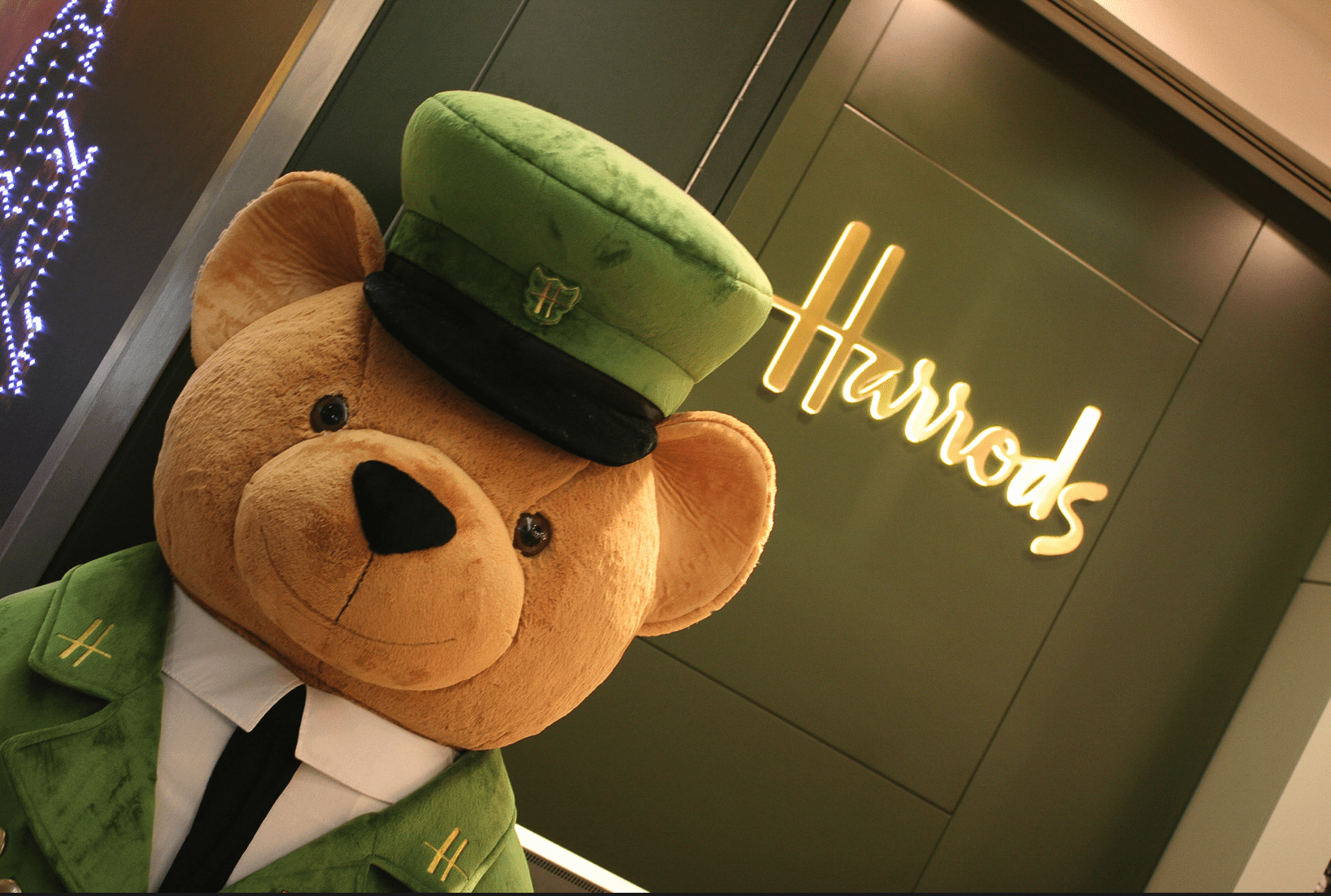
You can also pick up a famous Harrods teddy bear. These stuffed toys are synonymous with Harrods and have become highly sought after.
There are annual bears, holiday-themed bears, London-inspired bears, and even other creatures like Corgis and foxes.
For more London souvenir ideas.
Christmas at Harrods
Given its reputation as one of the finest department stores in the world, it's no surprise that the Harrods Christmas shop brands itself as a Luxury Christmas Shop.
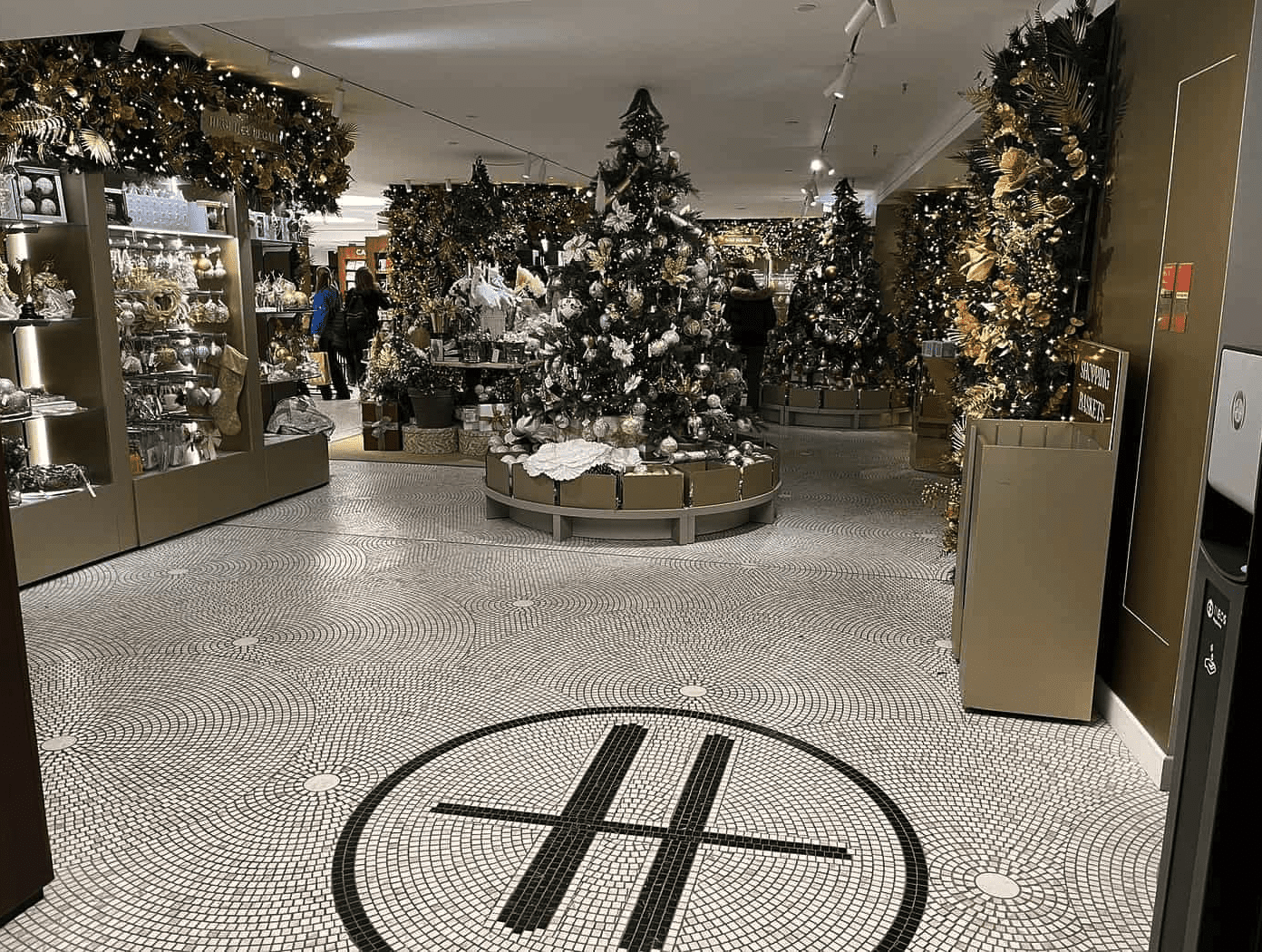
There are several departments dedicated to Christmas, such as Christmas gifts, Christmas decorations, Christmas foods, and more.
The entire lower ground floor turns into a Winter Wonderland, featuring beautifully decorated trees and the Christmas-time window displays are some of the most incredible in the city.
Find out more about Christmas at Harrods.
Harrods Dress Code and What Not to Bring
Harrods previously had a dress code that resulted in the refusal to admit a number of people including a woman with a "Mohican haircut", a football team in tracksuits, a scout troop, and a soldier in uniform.
Although the dress code has been relaxed, rules still apply.
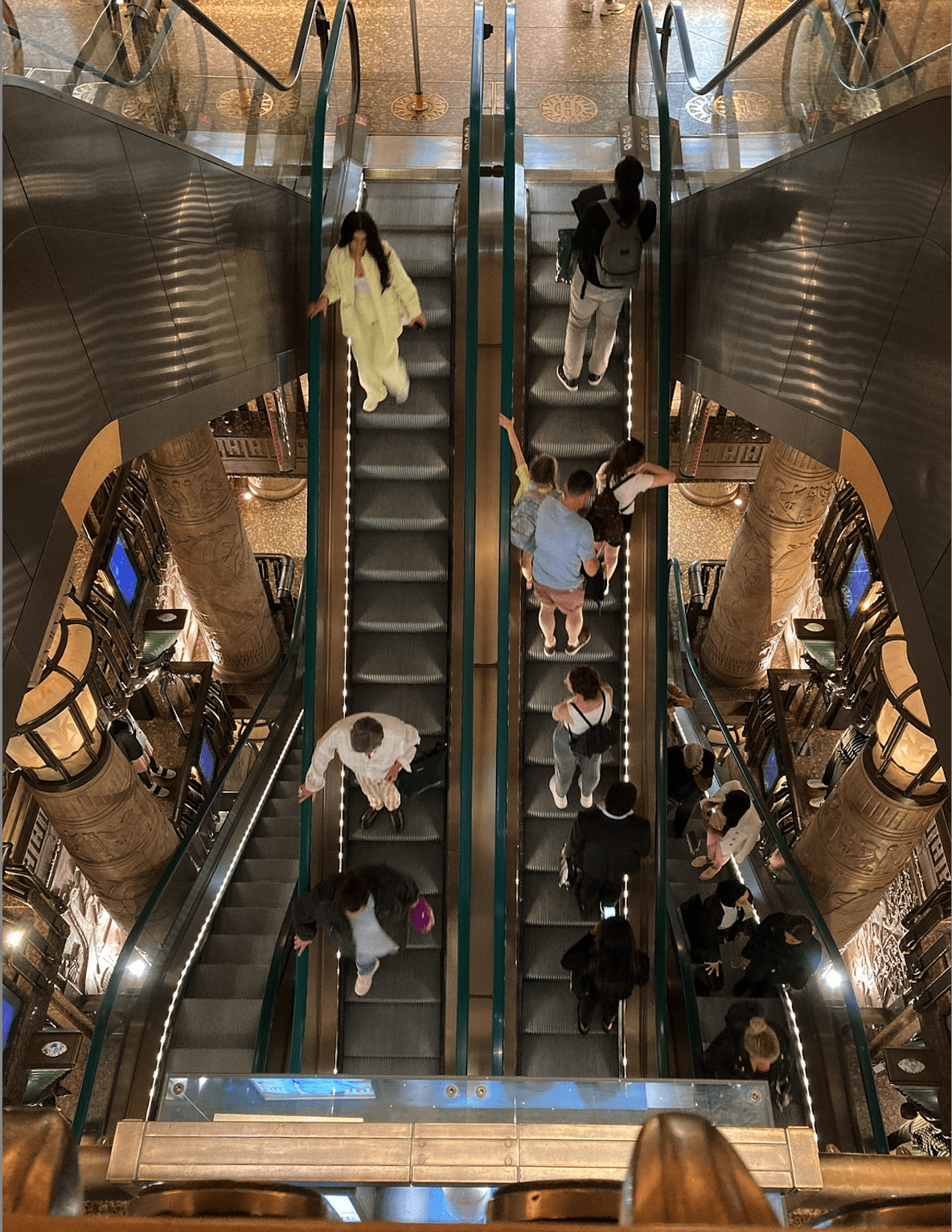
Visitors will be turned away if they are wearing dirty or unkempt clothing; if they are sweating profusely; if they have bare feet; or if they are wearing swimwear.
Guests are also not permitted inside if they are in possession of the following: wheeled devices (aside from mobility aids), alcoholic beverages, animals (except assistance dogs), large bags, and any product that produces vapour or smoke.
Location, Opening Hours, and Transport
Harrods is located at 87-135 Brompton Road, London SW1X 7XL in Knightsbridge. Knightsbridge is a residential and retail district with high property values and luxury restaurants, 5-star hotels, and flagship fashion stores.
On the edge of Hyde Park, Knightsbridge is one of the most expensive neighbourhoods in the city.
Due to its rather central location, Harrods can be visited on an itinerary that includes Royal Albert Hall, Hyde Park, and Buckingham Palace.
Opening Hours
Harrods opening hours are as follows:
Monday to Saturday: 10:00 - 21:00
Sundays: 11:30 - 18:00 (Browsing only until 12:00)
Getting There
Because Harrods is centrally located and well-served by public transport, you have many options to travel there.
Nearest Underground Station: Knightsbridge (Piccadilly Line). Harrods has it's own exit at the station.
Bus Routes: 9, 10, 14, 52, 64, 414, 452, C1
We recommend using this Google map for directions to Harrods from anywhere in the London area.
Other Stores Near Harrods
Knightsbridge is full of well-known shops including Harvey Nichols, Burberry, Ted Baker, Tommy Hilfiger, Roberto Cavalli, Giorgio Armani, Chanel, Valentino, Gucci, Louis Vuitton, and Fendi.
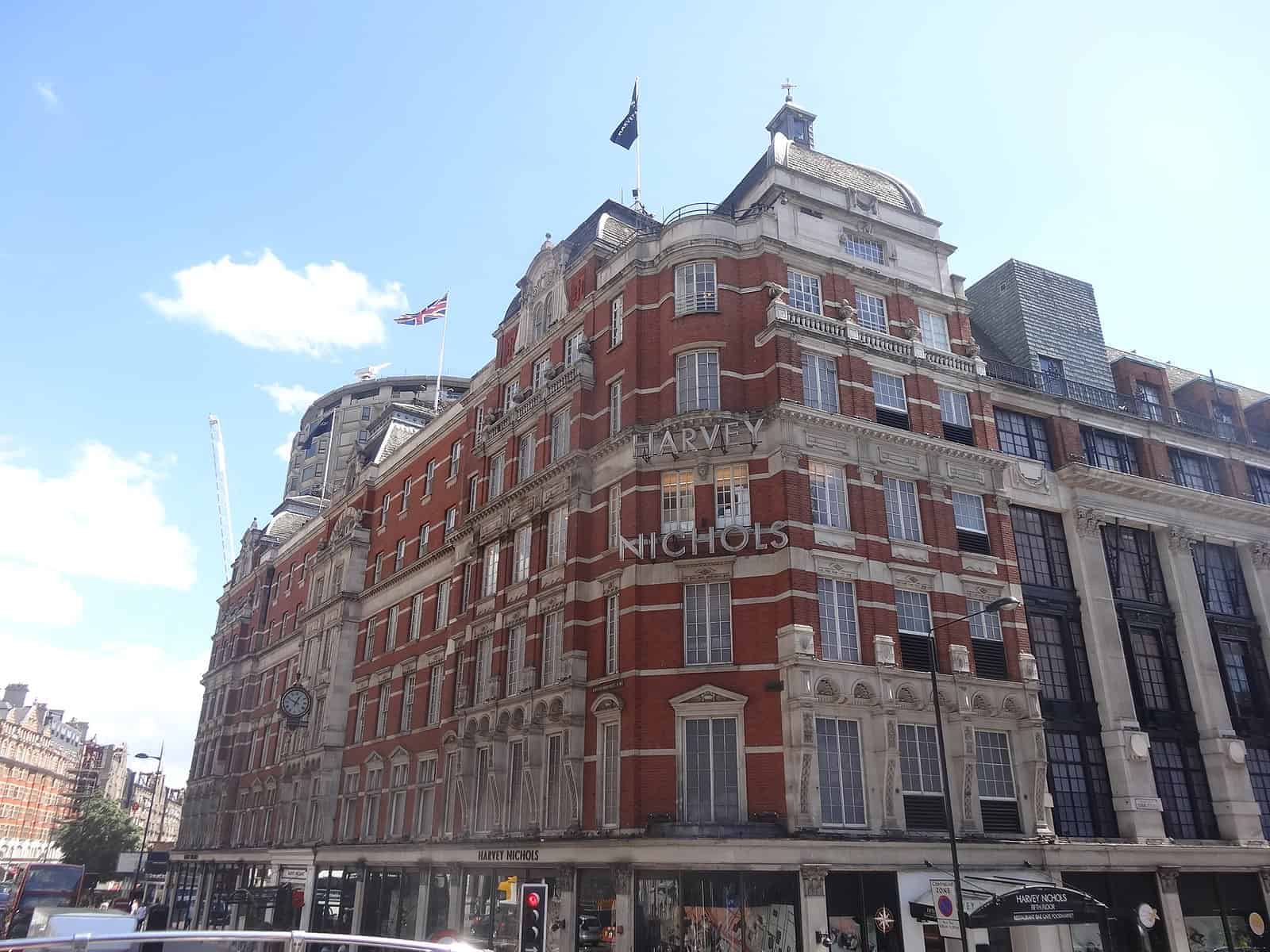
Related Posts







